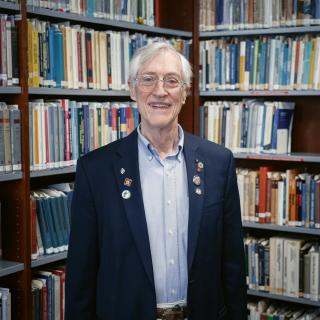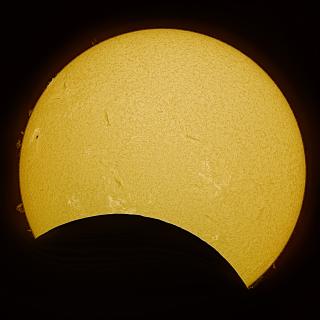"El proyecto GTC es un nuevo paso en la andadura del Instituto de Astrofísica de Canarias en su afán por hacer ciencia competitiva y de impulsar el desarrollo tecnológico e industrial de su entorno, y ello redundará, como ya lo hemos empezado a ver, no sólo en el alto nivel de producción científica, sino también en su experiencia en proyectos de instrumentación desde tierra y en el espacio". Así se expresaba la Ministra de Ciencia y Tecnología, Anna Birulés, en el acto celebrado ayer en Madrid por el que la Fundación para la Investigación de la Universidad de Florida S.A. formalizaba su participación en el proyecto del GTC. Mediante la firma de unos acuerdos de participación con la empresa pública GRANTECAN, que gestiona la construcción del Gran Telescopio "CANARIAS", la Universidad de Florida aportará el 5% del presupuesto del telescopio y se comprometa a acometer otras actuaciones e inversiones preparatorias previas a su explotación, por un valor total equivalente a 5,5 millones de euros. Como contrapartida, la institución obtendrá un 5% del tiempo de observación y contribuirá, también con un 5%, a los gastos de operación del GTC.
El Director General de Universidades del Gobierno de Canarias, Urbano Medina, reiteró el apoyo de su gobierno al proyecto GTC, desde el punto de vista tanto institucional como de política científica. El Director de Investigación de la Universidad de Florida y Secretario de la Fundación para la Investigación de la misma universidad, Thomas E. Wlash, expresó su satisfacción por el apoyo de su institución al proyecto GTC, "realmente un telescopio para el futuro", mediante un compromiso de contribución a su construcción y a su operación, así como por la firma de un protocolo de intercambio de estudiantes postdoctorales y profesores entre las dos instituciones. Por su parte, el Director General del Instituto Nacional de Astrofísica, Óptica y Electrónica de México (INAOE), José Silvano Guichard, manifestó la satisfacción de su institución por "formar parte de este consorcio, que es el proyecto astronómico más importante de esta década en Europa, y de ser socios, y sobre todo amigos, del instituto astronómico más importante de Europa".
Esta firma se suma a la ya realizada en su momento por el Instituto de Astronomía de la Universidad Nacional Autónoma de México (IA-UNAM) y el Instituto Nacional de Astrofísica, Óptica y Electrónica de México (INAOE), financiados por el Consejo Nacional de Ciencia y Tecnología de México (CONACYT).
Simultáneamente, con el fin de fomentar y afianzar el intercambio científico y tecnológico entre el Instituto de Astrofísica de Canarias (IAC) y las instituciones mexicanas y estadounidense, se ha establecido un Protocolo de Cooperación Astrofísica que, en palabras de la Ministra de Ciancia y Tecnología, "constituye un importante paso adelante para fomentar y afianzar programas de intercambio postdoctoral y de tecnólogos, además de impulsar la colaboración en futuros proyectos instrumentales. Todos sabemos lo importante que es que nuestros científicos y tecnólogos no sólo se muevan, sino que traspasen las fronteras y participen en proyectos internacionales. Para ello, es necesaria la formación en aquellos centros, con aquellos equipos que tienen una mayor experiencia. En este sentido, en el Ministerio de Ciencia y Tecnología es prioritaria la investigación en astrofísica."
Tras la firma de los acuerdos con México el pasado 31 de julio, se constituyó el Comité de Seguimiento de Utilización del GTC, un órgano creado con la finalidad de supervisar y regular el uso del GTC. Los miembros del Comité, nombrados por cada parte, se reunieron tras la firma para tratar varios asuntos, entre ellos el progreso del GTC.
El Secretario de Estado de Ciencia y Tecnología, Ramón Marimón, recordó que "este acuerdo con la Universidad de Florida sigue al firmado no hace mucho con distintas instituciones mexicanas, lo que supone la internacionalización del proyecto Grantecan, tanto en sus contenidos de investigación como de instrumentación, así como de intercambio de investigadores y estudiantes con la Universidad de Florida. Esto supone un gran impulso para el proyecto y un gran impulso del tipo de investigación abierta que queremos desarrollar en nuestro país."
ESTADO DEL PROYECTO
El GTC es el primer proyecto de esta envergadura liderado por España y está previsto que vea su primera luz en el año 2003. En el momento de su puesta en marcha será uno de los mayores telescopios del mundo, con 10,4 metros de diámetro, y su construcción se está llevando a cabo en el Observatorio del Roque de los Muchachos, en la isla de La Palma.
Actualmente se está instalando el grueso de la cúpula, construida por la UTE GMU. Tras la colocación de las vigas arco, se ha iniciado la instalación de los meridianos y paralelos, es decir, el "esqueleto" de la cúpula. Al mismo tiempo se han construido en la parte interior 4 andamios gigantescos que parten de la base de la cúpula y llegan hasta su parte superior con el fin de comenzar a instalar las chapas de cerramiento interiores.
A su vez, tras el montaje en fábrica de la estructura del telescopio en las instalaciones de la empresa SCHWARTZ-HAUTMONT , en Tarragona, se llevarán a cabo en breves fechas las pruebas de movimiento y de características previas a su traslado al ORM.
En cuanto a la obra civil, a cargo de la empresa ACS, ya se está cerrando el edificio del telescopio y continúan avanzando las obras del edificio anexo.
En función de estos plazos, se estima que a finales del año 2002 se habrá instalado el telescopio en su cúpula y que, a principios del año 2003, el GTC verá su primera luz, a la que seguirá un año después su explotación científica.
ASISTENTES AL ACTO DE LA FIRMA DEL ACUERDO Y DEL PROTOCOLO, CELEBRADO EN MADRID, EL 17 DE OCTUBRE DE 2001:
Firmantes del Acuerdo de participación en el proyecto GTC entre "Gran Telescopio de Canarias, S.A." ( GRANTECAN) y la Universidad de Florida:
Por Grantecan: Ramon Marimon Suñol, Secretario de Estado de Política Científica y Tecnológica y Presidente de GRANTECAN.
Por parte de la Fundación para la Investigación de la Universidad de Florida: Thomas E. Walsh, Director de Investigación Patrocinada de la Universidad de Florida y Secretario de la Fundación para la Investigación de la Universidad de Florida.
Firmantes del Protocolo de Cooperación Astrofísica entre el IAC y la Universidad de Florida:
Por parte del IAC: Anna Birulés, Ministra de Ciencia y Tecnología y Presidenta del Consejo Rector del IAC.
Por parte de la Universidad de Florida: Thomas E. Walsh, Director de Investigación Patrocinada de la Universidad de Florida y Secretario de la Fundación para la Investigación de la Universidad de Florida
Asistentes por parte de las instituciones mexicanas:
Jose Silviano Guichard, Director General del INAOE, y José Franco, Investigador del IA-UNAM.
Asistentes al Comité de Seguimiento de Utilización del GTC:
José Silvano Guichard, Director General del INAOE (México); José Franco, Investigador del IA-UNAM (México); Urbano Medina, Director General de Universidades e Investigación de la Consejería General de Universidades e Investigación del Gobierno de Canarias; Rafael Rodrigo, Gestor del Plan Nacional de Astronomía y Astrofísica; Eduardo Battaner, Director del Departamento de Física Teórica y del Cosmos de la Universidad de Granada; Francisco Sánchez, Director del Instituto de Astrofísica de Canarias (IAC); Pere Lluis Pallé, Responsable Área de Investigación IAC; Carlos Martínez, Responsable Área de Instrumentación IAC; José Miguel Rodríguez Espinosa, Director Científico de GRANTECAN; Pedro Alvarez, Director General de GRANTECAN; Thomas E. Walsh, Director de Investigación Patrocinada de la Universidad de Florida, Secretario de la Fundación para la Investigación de la Universidad de Florida y Profesor de Física e Ingeniería Eléctrica de la Universidad de Florida; Stanley F. Dermott, Director del Departamento de Astronomía y Profesor de Astronomía de la Universidad de Florida; Frederick Hamann III, Profesor Asociado de Astronomía de la Universidad de Florida; y Rafael Guzmán, Profesor Ayudante de Astronomía de la Universidad de Florida.
Más información:
Página web de GRANTECAN:
http://www.gtc.iac.es
Página web del IAC sobre el GTC:
http://www.iac.es/gtc
Instituciones:
Fundación para la Investigación de la Universidad de Florida
(UNIVERSITY OF FLORIDA RESEARCH FOUNDATION, S.A.) rgp.ufl.edu/ufrf/
Universidad de Florida: http://www.ufl.edu
CONACYT, Consejo Nacional de Ciencia y Tecnología de México: http://www.conacyt.mx
IA-UNAM, Instituto de Astronomía de la Universidad Nacional Autónoma de México: http://www.astroscu.unam.mx
INAOE, Instituto Nacional de Astrofísica Óptica y Electrónica de México: http://www.inaoep.mx
Gran Telescopio Milimétrico (GTM):
http://www.lmtgtm.org


